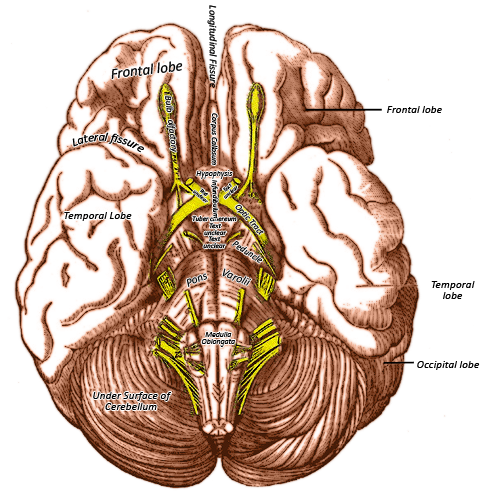Overview
Gross Anatomy
Clinical Anatomy
Homonymous hemianopia- A
stroke occurring within the optic tract (post chiasm projection to the lateral
geniculate nucleus of the thalamus), results in a homonymous hemianopia. The
nasal visual field on the affected side, and the temporal retinal shield on the
unaffected side are affected. The patient will complain of frequently bumping
into things.
Glaucoma- This
is a condition characterised by progressive visual loss and optic nerve damage.
A rise in intraocular pressure is a major risk factor (possibly sue to
decreased drainage of the aqueous humor in the anterior chamber of the eye).
The condition is divided into closed angle and open angle. Open angle is
painless, and develops chronically over time. Closed angle is also chronic, but
is usually painful and may present acutely. The patient may also complain of
sudden blurred vision, nausea and vomiting.
Pituitary Tumour- The
pituitary gland sits in the sella turcica, a bony cavity within the body of the
sphenoid bone. This cavity lies directly beneath the optic chiasm. If the
pituitary gland enlarges e.g. due to a tumour, the tumours may compress the
chiasm from beneath. This affects the fibers that cross over (from the temporal
visual fields, which corresponds to the nasal retina), and results in
bitemporal hemianopia. Patients lose their peripheral vision, which results in
the patient knocking into things as they walk or drive.
Diabetic retinopathy- Glucose
in the micro-arteries of the retina is very damaging. Changes to the retina
occur, following from the ischaemia. Cotton wool spots, flame haemorrhages, exudates
and aneurysms result. In advanced disease, neovascularisation begins, and may
affect the macula, compromising the patient’s central high quality vision.


